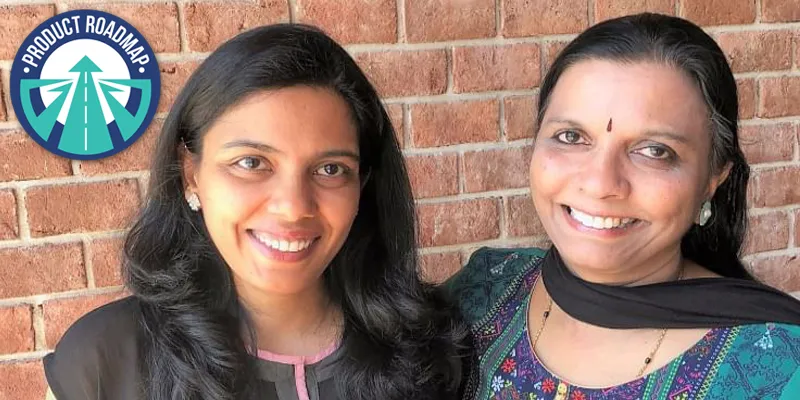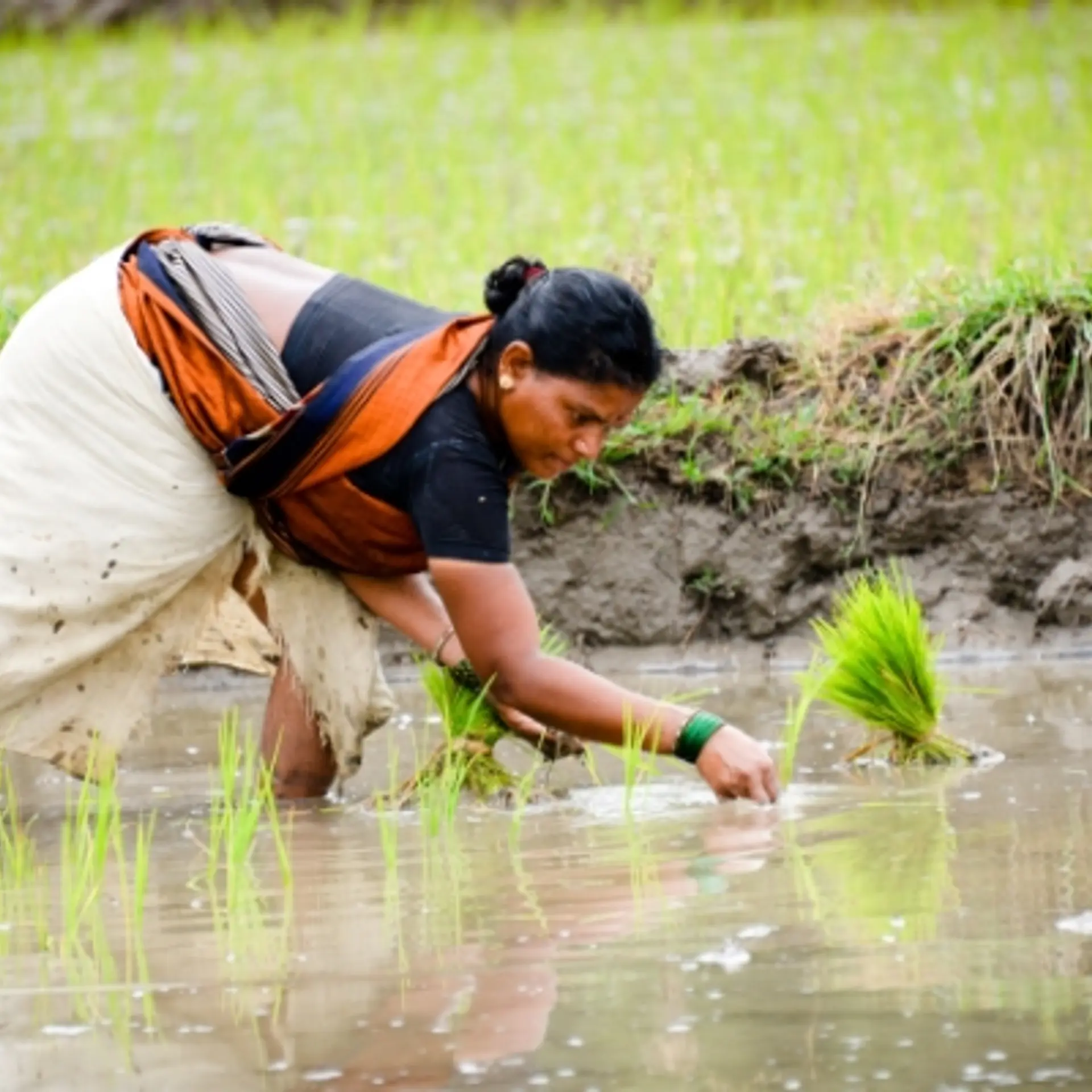[Product Roadmap] From breast cancer to river blindness, Niramai is using tech to simplify detection
A product roadmap clarifies the why, what, and how behind what a tech startup is building. This week, we take a closer look at healthtech startup Niramai, which shot into the spotlight by using AI to detect early-stage cancers with non-invasive, radiation-free methods.
Geetha Manjunath was working in AI R&D for multinational companies such as Xerox when she got the news that a close cousin had breast cancer. A few months later, her husband’s cousin also received the same diagnosis. Both women were under 45 years of age, and this came as a shock to Geetha.
Working with technology and AI for several companies operating in space of healthcare, transport, and more, Geetha felt the need to startup in the healthcare space.
In 2016, she joined hands with Nidhi Mathur to launch healthtech startup Niramai, which uses AI to detect cancer in the early stages with non-invasive, radiation-free, and painless methods.
The startup’s patented product Thermalytix is a portable, non-invasive, radiation-free, and non-contact solution for early-stage detection of breast cancer. It works by measuring the temperature of the chest region, and generating a report. . It has over 30 installations at hospitals and diagnostic centres across 10 Indian cities.
In February last year, raised $6 million funding led by Japanese VC firm Dream Incubator, Beenext, and other investors.

Founders of Niramai - Nidhi Mathur and Geetha Manjunath
Working amid the coronavirus crisis
The team has been working on the idea since June 2014 and collaborating with hospitals since then to collect data and develop the initial AI model. The founders started full product development and AI fine-tuning in January 2017, and got the first reference commercial installation for the end-to-end solution by September that year.
The healthtech startup is innovating to do its bit amid the current pandemic. “We have modified Thermalytix to develop a solution for Automated Fever Test and detecting respiratory ailments for screening and detecting possible COVID-19 patients,” Geetha says.
The solution aims to enable automated screening of the population by detecting likely COVID-19 infected people. It does this by checking for fever and associated respiratory diseases using Thermalytix, which uses AL algorithms over thermal images.
The screening can be done by a health worker, reducing the pressure on clinical testing. The Fever Test solution can be deployed at the entrance of any facility, including apartments, offices, malls, hospitals, and more.
The solution was pilot-tested at a biotechnology company in March 2020.
Starting with thermography and AI
When Niramai started out, Geetha had thought of methods other than mammography. A few researchers in the US had mentioned thermography, but the founders realised that healthcare institutions did not use thermography due to the prevailing accuracy issues.
But they felt the accuracy problems could be easily tackled using AI.
On why they chose the thermography model, Geetha explains that there are limited methods of detecting breast cancer. The most common is mammography, which tries to find malignant lumps in the breast using density differences. Geetha says it uses X-rays, and the lumps are seen as white.
Geetha says one cannot go for a mammography more than once every two years as it can cause radiation problems. Also, women under the age of 40 have denser breasts; this means the entire breast appears white in a mammography for a woman under 40.
This eliminates over 50 percent women from getting a regular breast cancer test. Also, a mammography can be extremely painful and uncomfortable.
Working on a non-invasive method
The Niramai team developed a novel technology to identify early-stage breast abnormalities in a privacy-aware, radiation-free way that is effective for women of all age groups.
The patented Thermalytix uses a high-resolution thermal sensing device and a cloud-hosted analytics solution for interpreting thermal images using ML and AI.
“Our technology works well on women of all age groups. We provide preventative breast health screening solutions in hospitals and diagnostic centres. Since our solution is portable, age-agnostic, and has zero radiation, we can also do the test outside hospital premises and help women in rural areas as well. These benefits very effectively address the concerns and limitations for greater adoption of screening for women across all segments. Early detection saves lives,” Geetha says.
The solution automatically generates detailed quantitative reports with clinical parameters and estimates the likelihood of cancer. These scores help doctors make quick and more accurate decisions.
Building the first solution
“Our first technical solution was to identify the location of the tumour in a cancer patient. Then, we thought since the solution has no side effects and can detect very small lesions, why not use it for screening all women as a preventive measure. The initial research experiments were done in my previous organisation as a side project,” Geetha recalls.
Before building a complete solution, the team needed to do clinical testing on real patients and showcase results that highlighted the benefit of the solution over existing methods. Once the AI model was in place, they needed to conceptualise and develop the complete product offering.
“Then we had to find the right partner as a reference customer to launch the product while ensuring that end patient benefits were not compromised. With the mentorship of expert radiologists Dr Sudhakar and Dr Ramprakash, we fine-tuned the automated reports so that generated scores were useful to radiologists,” Geetha says.
In January 2018, the team received its first request from an NGO to buy the solution. Niramai also partnered with Karnataka Cancer Society to evolve the usage for population screening.
Geetha says the team started generating screening camp-level reports, and improvised the solution to generate triaging reports automatically in real time.
Niramai now has two different products. The first is for population screening, and gives red/yellow/green signals. This helps a camp organiser decide whether the woman needs to be sent to hospital for a detailed check. The second, for diagnostic centres, offers detailed reports that help radiologists take informed decisions.
The first product required the team to review every image for quality. An expert radiologist’s review was used for each and every report for almost a year to ensure this.
Meanwhile, the team also began working on increasing the accuracy of the model for automated reporting.
Making it easier for healthcare workers
The Niramai founders realised they needed more technological advancements when they put the solution in the hands of health workers. This was critical as they could make many mistakes while imaging, and it was important to adhere to protocols.
“We developed novel image-quality check algorithms that now enable us to give instructions to the technician on correct image capture and help with real-time report generation, which we currently use for screening camps,” Geetha says.
The team continues to do clinical trials on complicated cancer cases to make the algorithms smarter so they can identify all types of cancer while reducing false alarms.
“A major learning has been proving clinical efficacy. We also realise how important it is to partner with experts and hospitals to understand current clinical practices and find the right fit for our new product into that care pathway to increase acceptance,” Geetha says.
The key challenge was convincing hospitals and doctors to try the new solution. The fact that it had no side-effects helped.
Early on, the team also partnered with a radiologist to give a certified report to the hospital so that concerns about medico-legal issues were resolved. This meant getting clearance from DCGI for the test.
The team chose available off-the-shelf hardware instead of developing a thermal sensor. This gave Niramai a good start as it did not have to wait for CE or FDA clearance.
“When we saw low uptake in hospital walk-ins, we started an outreach business model for screening camps in corporate offices and rural areas. That gave a jump-start in screening numbers. Competing in contests and accelerator programmes enabled us to get some visibility, public attention, and allowed networking with key hospitals,” says Geetha.
Creating awareness amongst people about preventative tests to ensure wellness, particularly encouraging women to take a cancer test, was also a challenge.
“Mammography is a known standard for breast screening. Many women did not know the limitations of the test and hence that required us to break the legacy to at least get some women to come forward for the new test,” Geetha says.
The team now aims to use its patented technology to help detect other diseases.
In April 2019, Niramai announced that it would leverage Thermalytix to detect the presence of parasitic worm Onchocerca volvulus, which causes Onchocerciasis (river blindness) and significant disability. The disease is common in remote African villages, and has affected nearly 17 million people.
Niramai’s non-invasive method is expected to help assess the efficacy of new drugs being developed to control river blindness by killing the adult worms, and accelerate elimination of the disease. The project has raised funding from the Bill & Melinda Gates Foundation.
(Edited by Teja Lele Desai)


![[Product Roadmap] From breast cancer to river blindness, Niramai is using tech to simplify detection](https://images.yourstory.com/cs/2/a9efa9c02dd911e9adc52d913c55075e/800x400-1588662726076.png?mode=crop&crop=faces&ar=2%3A1&format=auto&w=1920&q=75)
![[Product Roadmap] How Ratan Tata-backed Moglix is tapping tech to become Alibaba 2.0](https://images.yourstory.com/cs/2/a9efa9c02dd911e9adc52d913c55075e/roadmap800x400-1588003937614.png?fm=png&auto=format&h=100&w=100&crop=entropy&fit=crop)
![[Product Roadmap] How Drivezy is navigating the road ahead amid coronavirus crisis](https://images.yourstory.com/cs/2/a9efa9c02dd911e9adc52d913c55075e/product-roadmap-1586851181283.png?fm=png&auto=format&h=100&w=100&crop=entropy&fit=crop)
![[Product Roadmap] From affordable diagnostics to coronavirus tests, how Qure.ai is tapping deep tech](https://images.yourstory.com/cs/2/a9efa9c02dd911e9adc52d913c55075e/WhatsAppImage2020-03-31at11-1586233172038.jpeg?fm=png&auto=format&h=100&w=100&crop=entropy&fit=crop)




